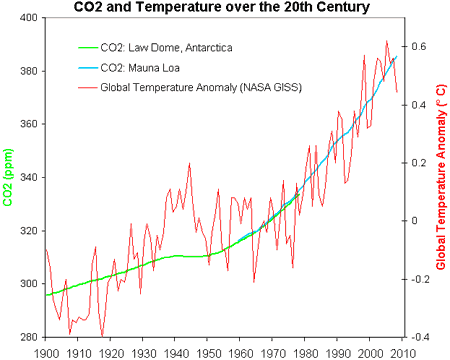By : Allan Maynard, MSc.
November 26, 2019
At this critical point in humankind’s history, we must not delude ourselves. Carbon emissions from the burning of fossil fuels are warming the planet at an alarming rate. The warming of the planet is in turn affecting our climate in ways that are even more dramatic than past predictions.
THE FACTS – There is a mountain of evidence provided by climate scientists around the world that leads to irrevocable conclusion that climate change is THE issue of our times. This conclusion has been endorsed by the national science academies of almost every country in the world. It has been clear for some time now, that without monumental action on a global scale, our world is facing drastic consequences. The mean global temperature has warmed about 1 degree C since 1900 most of which has occurred since 1960. Some parts of the Arctic have warmed by over 7 degrees C. The previous decade was the warmest since records were kept.
Record-breaking heat waves are now 5 times as likely as they once were. Sea levels have risen 20 cm (8 inches) since 1900 and are now rising at an accelerated rate. As well, due to the increased carbon dioxide in the atmosphere, our oceans are becoming more acidic thus threatening sea life and coral reefs. We have seen devastating floods and landslides in some areas and extreme droughts along with related wildfires in others. These extreme weather events have been costly. The insurance industry has certainly taken note as annual climate event costs have risen from 50 billion annually in the 1980s to over 200 billion dollars annually in the last decade.
It is acknowledged that planet earth has been warm (or even warmer) in eons past. But those climate events occurring, over thousands of years, have their own explanations. The warming over the past 70 years can only be linked to carbon dioxide emissions.
MEASUREMENTS – So, how can scientists definitively claim that carbon emissions are the main causative factor? Firstly it can be stated emphatically that carbon dioxide, emitted when we burn fossil fuels, is a greenhouse gas. That is never questioned. There are other greenhouse gases in our atmosphere but none have the same radiative impact as carbon dioxide. This is what happens. Energy from the sun enters the atmosphere as visible and ultra-violet radiation that is low in heat. The earth’s surface re-emits this energy as infra-red radiation (or heat). Greenhouse gases (and especially carbon dioxide) ‘capture’ this heat, thereby warming our atmosphere. Without greenhouse gases our planet would be more than 30 degrees C cooler. The planet would be uninhabitable.
There are many ways science can make the connection between increased carbon emissions and planet warming. Carbon dioxide concentration in our atmosphere has increased from 270 parts per million (ppm) in 1940 to over 400 ppm today. When this increase is graphed with the rising temperature the correlation is remarkable.

Other climate forcings – such as volcanic and solar activity do not show this kind of correlation.
The influence of carbon emissions can also be found in the spectrum (actual wavelengths) of greenhouse radiation. Using high-resolution instrumentation, climate scientists have measured the influence of CO2 on both incoming solar energy and outgoing long-wave (heat) radiation. According to NASA, two-thirds or the warming of the atmosphere has occurred since 1975. Satellites have recorded the spectrum of the outgoing radiation over the period 1970 to 1997. Over that period, when atmospheric temperatures increased dramatically, there is a corresponding decrease in infra-red (heat) radiation. In other words – less long-wave (heat) radiation is escaping to space at the specific wavelengths of greenhouse gases. And, this corresponds to increased long-wave radiation measured at the surface of the Earth at these same wavelengths. This is empirical evidence.
UNFORTUNATE DENIAL – Unfortunately there has been a well-organized denial industry that has been successful in undermining the scientific evidence of global warming and the resulting climate change. The ‘denial industry’ refers to public relations companies that publish supposedly scientific papers that are not peer reviewed and indeed contain cherry-picked data to support a pre-ordained conclusion. These are the same kinds of companies along with their so-called ‘scientists’ that were hired to deny the truth about studies that linked lung cancer to cigarettes, industrial discharge to acid rain and CFCs (chloro-fluoro carbons) to ozone depletion. In these 3 cases they have been soundly proven wrong and they are in the process of being proven wrong about climate change. They fight science with junk-science but their message sticks. For politicians who lack the courage to confront the global warming threat (and this is especially the case now in the United State), these denial reports are their salvation.
MOVING ON – Fortunately, there is increasing hope that the existential threat of climate change is being addressed. Now that we have the Paris Agreement – a strong message has been sent to private markets regarding the need to divest away from fossil fuels and expand into low-carbon technologies. This transformation is already creating jobs and will create wealth on a monumental scale. A number of economic studies have determined that investments in energy-efficient and renewable energy sources yield more jobs for a set amount of spending than investing in maintaining or expanding the fossil fuel industry. In fact, 2014 was the first year that total world investments in renewable energy sources surpassed investments in fossil fuels and related industries. However, with the Trump administration taking the appalling step of withdrawing from the Paris agreement, there is deep worry that this impressive progress is in jeopardy.
The key elements of the Paris Accord are:
- To keep global temperatures “well below” 2.0C (3.6F) above pre-industrial times and “endeavour to limit” them even more, to 1.5C
- To limit the amount of greenhouse gases emitted by human activity to the same levels that trees, soil and oceans can absorb naturally, beginning at some point between 2050 and 2100 (in other words our world will become carbon neutral).
- To review each country’s contribution to cutting emissions every five years so they scale up to the challenge
- For rich countries to help poorer nations by providing “climate finance” to adapt to climate change and switch to renewable energy.
This will not be easy and will require a 180- degree paradigm shift in our thinking. But for the sake of our grandchildren and generals beyond, this must happen.

Very Interesting article, citing much of previous dissertations on the subject, well written. How do we counteract the effects of fossil fuels and their impact on the environment…that is the question to be answered. It took us years to get to the standard of living we now have, are we now expected to turn back the clock or reinvent electric/nuclear or other options to our infrastructure throughout the civilized world…I wonder who will pay for these changes???